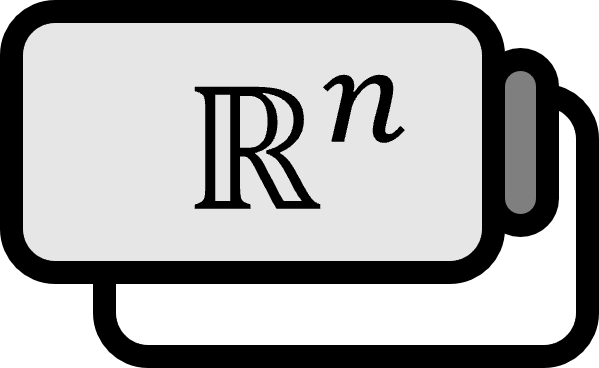Divergence in Vector Fields
Definition
In a Euclidean space, a vector field $\textbf{f} : \mathbb{R}^{n} \to \mathbb{R}^{n}$ represented as $\textbf{f} = (f_{1} , \cdots , f_{n})$ and the direction of the axis as $u_{1} , \cdots , u_{n}$, the divergence of $\textbf{f}$ is defined as follows.
$$ \operatorname{div} \textbf{f} := \nabla \cdot \textbf{f} = \sum_{k=1}^{n} {{ \partial f_{k} } \over { \partial u_{k} }} $$
Explanation
The divergence of a vector field serves as a measure of whether vectors converge or diverge at a given point $\textbf{v} \in \mathbb{R}^{n}$.
Divergence represents the quantity of flow, and thus, is frequently mentioned in dynamics, fluid mechanics, electromagnetism, etc. The fact that the magnitude of $0$ can be compared signifies $\nabla \cdot \textbf{f} (\textbf{v}) \in \mathbb{R}$, reminding us once again that the divergence at a point is a scalar fact. This allows us to derive a scalar field that has physical or mathematical significance from a given vector field through divergence.
$\nabla$ is pronounced as nabla and is used to calculate the gradient, but becomes somewhat different when used in form $\nabla \cdot$. Consider in familiar $3$ dimensions. The gradient of the scalar function $f : \mathbb{R}^{3} \to \mathbb{R}$ is
$$ \nabla f = \left( {{ \partial f } \over { \partial x }} , {{ \partial f } \over { \partial y }} , {{ \partial f } \over { \partial z }} \right) $$
Just as the scalar product of vector $\textbf{x}=(x_{1} , x_{2} , x_{3})$ and scalar $a \in \mathbb{R}$ can be represented as
$$ \textbf{x} a = (x_{1} , x_{2} , x_{3}) a = (x_{1} a , x_{2} a , x_{3} a) $$
in rough mathematics, thinking of $\nabla$ as a vector operator $\displaystyle \nabla \overset{?}{=} \left( {{ \partial } \over { \partial x }} , {{ \partial } \over { \partial y }} , {{ \partial } \over { \partial z }} \right)$ differentiating in the direction of each axis, the scalar product with scalar function $f : \mathbb{R}^{3} \to \mathbb{R}$ can be represented as
$$ \nabla f \overset{?}{=} \left( {{ \partial } \over { \partial x }} , {{ \partial } \over { \partial y }} , {{ \partial } \over { \partial z }} \right) f \overset{?}{=} \left( {{ \partial } \over { \partial x }} f , {{ \partial } \over { \partial y }} f , {{ \partial } \over { \partial z }} f \right) $$
Similarly, extending these kind of “misrepresentations” to the vector function $\textbf{f} := \left( f_{1} , f_{2} , f_{3} \right)$, the inner product between two vectors $\nabla$ and $\textbf{f}$ $\cdot$ can be represented as
$$ \nabla \cdot \textbf{f} \overset{?}{=} \left( {{ \partial } \over { \partial x }} , {{ \partial } \over { \partial y }} , {{ \partial } \over { \partial z }} \right) \cdot \left( f_{1} , f_{2} , f_{3} \right) \overset{?}{=} {{ \partial } \over { \partial x }} f_{1} + {{ \partial } \over { \partial y }} f_{2} + {{ \partial } \over { \partial z }} f_{3} $$
However, this notation is convenient rather than rigorous, and unless the definitions and considerations have been thoroughly examined to justify such expressions, they should only be considered as a way to facilitate understanding. In a cool-headed manner, $\nabla$ is merely the function of the scalar function representing the gradient of $f$, and $(\nabla \cdot)$ is wholly the function of the vector function representing the divergence of $\textbf{f}$. It might be okay to think of $\nabla$ and $\cdot$ separately, but don’t do so carelessly.

.svg.png#center)